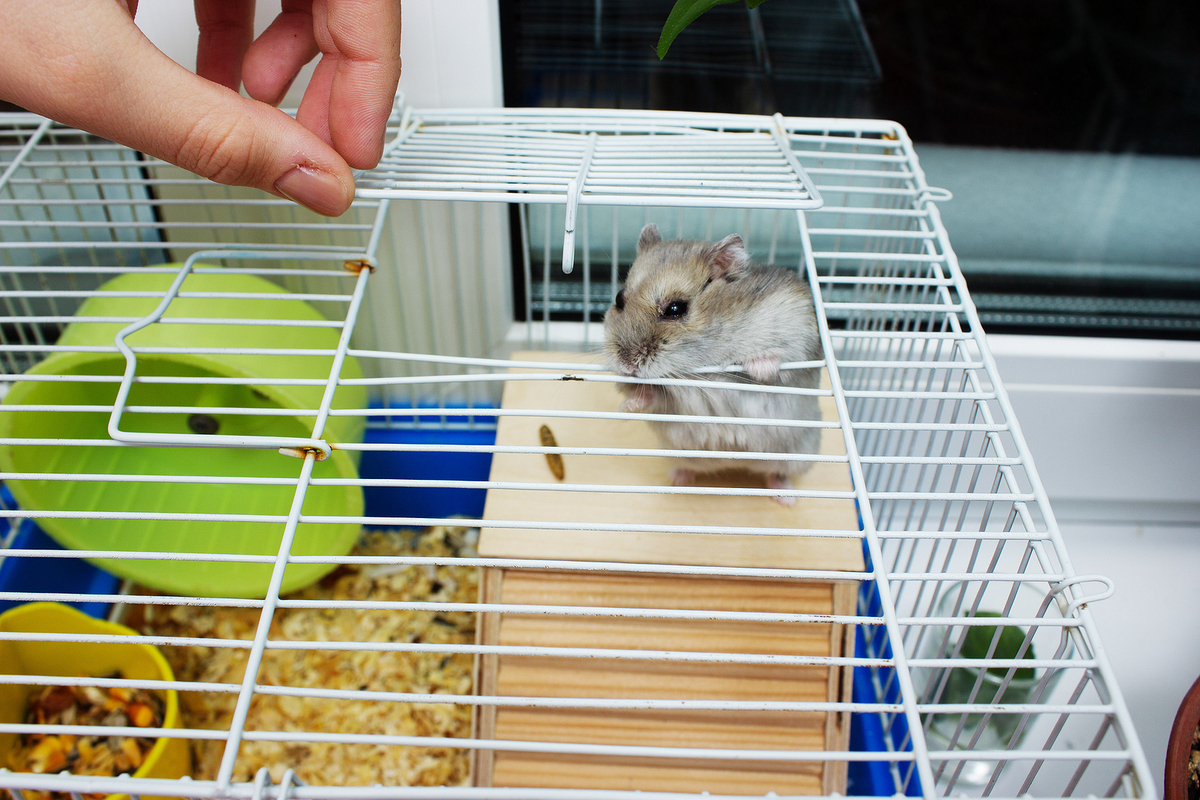Keeping Your Hamster (and Its Cage) Clean
Like any other pet, hamsters depend on their owners to take care of their basic needs, including their personal hygiene. Because hamsters eat, sleep, play, and go to the bathroom within a confined cage and play space, this living environment can become dirty fast—which means owners need to stay on top of cleaning not only the cage, but their beloved hamster, too.
Fortunately, proper hamster hygiene is easy to achieve, especially when you stick to a recommended schedule. Here's what you need to know when tending to your hamster's personal hygiene needs.
How Often to Clean Food and Water Dispensers
Since hamsters are putting their mouths on these dispensers, food grime and bacteria can grow quickly. Contaminated water and food are a potential source of food-borne illness, and no hamster owner wants to deal with a hamster that's acquired an avoidable illness.
Fortunately, a little soap, water and scrubbing is all your hamster needs to enjoy clean food and water dispensers.
How Often to Change the Hamster Bedding
The bedding of your hamster's cage is one of the most important tasks when it comes to cleaning your hamster's living space. Since bedding can become soiled with your hamster's waste, as well as its food and water, bedding needs to be changed out at least once a week.
You should also conduct a daily inspection to remove any visibly soiled bedding from the cage. This will extend the cleanliness of the bedding, although it isn't a substitute for completely replacing the bedding on a weekly interval.
How Often to Clean a Hamster Cage
While bedding needs to be changed out weekly, grime can collect all over your hamster's living space, including on its toys, walking platforms, food and water dispensers, and the wires of its cage. To keep this grime from becoming a health issue, hamster owners are encouraged to conduct a full cleaning at least once every month.
Full cage cleanings will require you to move your hamster out of its cage and into a safe, secure, temporary space. In addition to removing the bedding and other debris, you should also take out all habitat features, including hard toys and other accessories, and place them in warm, soapy water to soak before scrubbing them clean.
Once scrubbed and rinsed, these items should be thoroughly dried before being returned to the cage—otherwise the leftover water could attract mold into your hamster's cage. While the accessories and bedding are removed from the cage, wipe down the interior of the cage and allow it to dry off before replacing the accessories and adding new bedding into the cage.
How to Clean Hamster Tunnels
Tunnel parts from your hamster's cage can be cleaned along with all other accessories, including the wheel and other hard toys. If the insides of the tube parts are hard to reach with your hands or other scrubbing device, consider purchasing a bottle brush, which will help you reach into tubes and scrub the inside walls.
As with other cage accessories, make sure tunnels are dry before placing them back in the cage.
How do Hamsters Clean Themselves?
Hamsters are very skilled at grooming themselves, and for the most part they don't require an owner to perform any in-depth cleaning. You will notice your hamster rubbing its fur with its hands and mouth, which is the animal's way of spreading protective, healthy oils across their fur.
This also happens after you hold your hamster. Your pet will groom itself to remove your scent and replace oils on its fur that were removed when you held them.
To support your hamster's self-cleaning habits, make sure you're changing bedding frequently in the cage. This will keep their fur clean and leave them with manageable grooming tasks.
Can You Give Hamsters a Bath?
While hamsters are great self-cleaners, they sometimes need a little help cleaning their fur. The most common question here is, "Can hamsters get wet?" This is where bathing your hamster is different from other pets : Since hamsters are prone to getting cold when wet, and since bathing removes important oils from their fur and skin, water-based bathing isn't recommended.
Instead, you can use a hamster dust bath house as a bathing tool. This dust bath is a simple tool that your hamster will use to play and clean their own fur and skin. When your hamster is smelly and needs a bath, place a dust bath in the cage for a day and let them clean at their own convenience. This will do all the cleaning you would have done through a traditional bath.
In addition to dust baths, you can also brush your hamster's fur periodically to remove bedding and other debris that may stick to your pet over time.
How to Clean a Hamster Cage with Babies in It
Worried about cleaning your hamster cage when babies are present? It's actually no different from cleaning a cage with only adult hamsters: For in-depth cleaning, transfer the hamsters, including babies, into a separate holding area to keep them safe while you clean the cage. While it's sometimes tempting to skip cleaning and avoid disrupting the babies, an unclean environment is a health risk to those babies, so stay on top of cleaning even though it's more of an inconvenience for both you and your pets.
While hamster cages require frequent cleaning, your hygienic hamster will love the consistency and care you put into keeping their cage and toys sanitary and safe.



